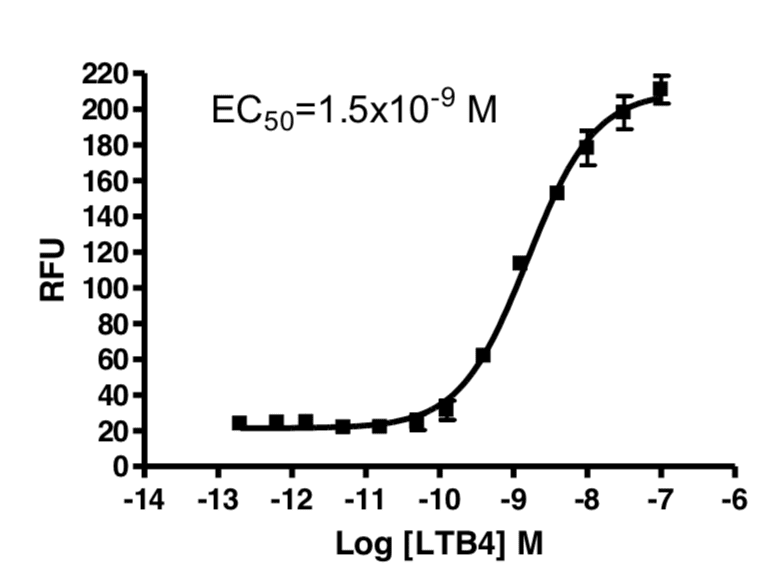HUMAN RECOMBINANT BLT1 RECEPTOR
MULTISCREEN™ DIVISION ARRESTED CELL LINE
Product Information
Catalog Number:
H1165a
Lot Number:
H1165a-112414
Quantity:
1 vial (4 x 106) frozen cells
Freeze Medium:
Sigma Freezing Medium (C-6164)
Host cell:
HEK293T
Transfection:
Expression vector containing full-length human LTB4R cDNA (GenBank Accession Number NM_181657) with FLAG tag sequence at N-terminus
Recommended Storage:
Liquid nitrogen upon receiving
Propagation Medium: DMEM, 10% FBS
Stability:
Stable for 1-2 days after thawing
Data Sheet
Background: Leukotriene B4 (LTB4) is a potent lipid mediator of allergic and inflammatory reactions, as well as a modulator of immune responses. Two types of plasma membrane receptors for LTB4 have been described on human neutrophils. The high-affinity human leukocyte LTB4 receptor, BLT1 (or LTB4R) mediates aggregation, chemotaxis, chemokinesis, and increased adherence to surfaces, whereas the low-affinity receptor mediates degranulation and increased oxidative metabolism. BLT1 mRNA is expressed in leukocytes and to a lesser degree in spleen and thymus. Studies in mice with disrupted BLT1 gene indicate a major role for BLT1 in acute inflammation and immediate hypersensitivity, as well as in leukocyte functions such as chemotaxis and firm adhesion to endothelium in response to LTB4.
Application: Functional assays

Dose-dependent stimulation of calcium flux upon treatment with ligand, measured with MultiscreenTM Calcium 1.0 No Wash Assay Kit (Multispan MSCA01).
References:
Tager et al. (2000) BLTR mediates leukotriene B4-induced chemotaxis and adhesion and plays a dominant role in eosinophil accumulation in a murine model of peritonitis. J Exp Med 192:439.
Stankova et al. (2002) Modulation of leukotriene B4 receptor-1 expression by dexamethasone: potential mechanism for enhanced neutrophil survival. J Immunol 168:3570-3576
